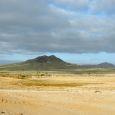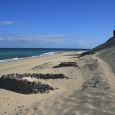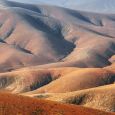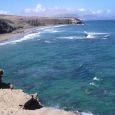Fuerteventura
Advertisement
By Air
The international airport in Fuerteventura is a modern and impressive building. It is situated very close to the capital, Puerto del Rosario, and only 10 minutes by car from the resort of Caleta de Fuste. Flights mainly arrive from Europe and other Canary Islands, with over four million passengers passing through every year. You can get to and from the airport by taxi, which can be found directly outside Arrivals, or by coach transfer if travelling on a package tour. There are also two bus routes serving the airport. The main Fuerteventura airport bus leaves every 30 minutes and runs between the capital, Puerto del Rosario, and Caleta de Fuste. The second airport bus is not as frequent and runs between the capital and Morro Jable, in the south of the island.
By Car
It is not possible to drive to Fuerteventura Island, but once you’re on the island, it is possible to drive to each town. You should always carry a valid driving licence and passport with you when driving, as if you are stopped by the police and fail to produce either, you will face an on-the-spot fine. Driving is on the right side of the road and there are strict speed limits and excellent signage. Buses and taxis always expect cars to give way to them. Parking is usually free anywhere on the island. All of the roads are well maintained and fairly quiet. The roads are generally very safe, and as the island is only 60 miles long and 18 miles wide, it is possible to drive around entirely in one day. The distance between Puerto del Rosario and Corralejo is about 12 miles, while La Oliva and Antigua are approximately six miles from Puerto del Rosario, Caleta de Fuste is about seven miles away and Betancuria about eight miles.
By Bus
It is not possible to travel to the island by bus, although there is a comprehensive bus network on the island itself.
By Ferry
Ferry links run between each of the Canary Islands. Most of the ferries are very modern and a cheaper alternative to flying. Ferries run regularly throughout the year.
Advertisement
La Lajita Zoo and The Oasis Park Garden
La Lajita Zoo is home to a small selection of animals and offers a parrot show, horse rides and camel safaris. In the village surrounding the zoo, there are many seafood restaurants and bars. It is a great day out for children and will keep them entertained for hours.
The Oasis Park Garden: is located in the town of La Lajita and is a stunning example of botanical gardens. The gardens cover a vast area, which takes at least two hours to walk around. It is one of the few places on the island where you will find greenery and trees in abundance.
Jandia Nature Reserve
Parque Natural de Jandia is located in the town of Pajara and is an area full of contrasts. The reserve is a mixture of sand dunes and vegetation. It is one of the most valuable examples of natural wildlife in the Canaries. Many animals and insects can be found here including kestrels, stonechats, hawks, Egyptian vultures and lizards.
Betancuria
This village takes its name from the Spanish conqueror, Juan de Bethencourt, and it was his headquarters throughout much of the 15th century. The centre of the village is dominated by the striking Santa Maria Church. On the drive from Betancuria to Pajara, there are spectacular views and plenty of viewpoints at which you can stop and admire them. From the 17th to the 19th century, this village was the capital of the island and home to the military governors. The governor’s townhouse, Casa des Coroneles, has been renovated and is now open to the public. In the centre of the village, there is a stunning church which features a painting of the Last Judgment, a Baroque-style painting by Juan de Miranda. The village is also home to an art gallery exhibiting work from local artists.
La Oliva
From the 17th to the 19th century, this village was the home of military governors and the capital of the island. The governor’s townhouse, Casa des Coroneles, has been renovated and is now open to the public. In the centre of the village, there is a stunning church which features a painting of the Last Judgment, a Baroque-style painting by Juan de Miranda. The village is also home to an art gallery exhibiting work from local artists.
Puerto del Rosario
This is the busiest town on the island and can be found on the western side. Efforts have only been made recently to take advantage of the booming tourist trade and even today, goats are thought to outnumber people. The stunning harbour has recently been rebuilt and features some excellent examples of traditional architecture. The home of the exiled poet, Miguel de Unamuno - now a museum - can also be found at the harbour. The area offers excellent souvenir shops, cafés and bars.
Information not available
January - February -> 17(°C) - Winter
July - August -> 24(°C) - Summer
Advertisement








